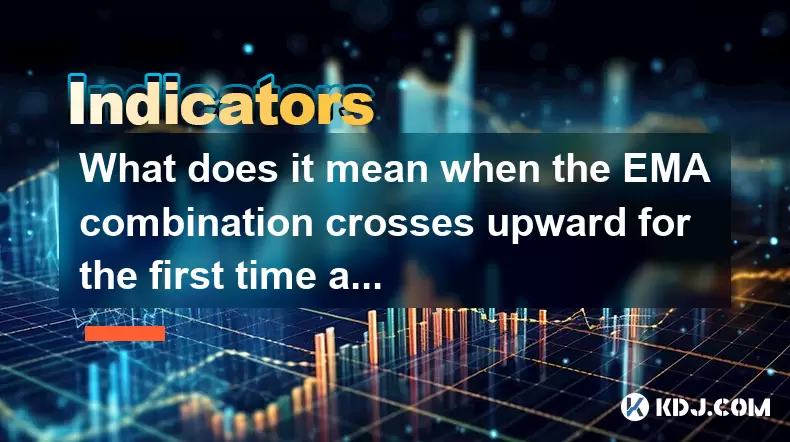-
 Bitcoin
Bitcoin $118600
0.36% -
 Ethereum
Ethereum $3855
1.06% -
 XRP
XRP $3.195
-0.09% -
 Tether USDt
Tether USDt $1.000
-0.04% -
 BNB
BNB $844.5
6.23% -
 Solana
Solana $191.3
2.83% -
 USDC
USDC $0.9997
-0.01% -
 Dogecoin
Dogecoin $0.2376
0.10% -
 TRON
TRON $0.3242
0.83% -
 Cardano
Cardano $0.8222
0.13% -
 Hyperliquid
Hyperliquid $45.26
6.53% -
 Sui
Sui $4.200
-2.56% -
 Stellar
Stellar $0.4336
-1.24% -
 Chainlink
Chainlink $18.86
0.28% -
 Hedera
Hedera $0.2796
-1.75% -
 Bitcoin Cash
Bitcoin Cash $583.3
-1.84% -
 Avalanche
Avalanche $27.06
8.09% -
 Litecoin
Litecoin $112.3
-1.16% -
 Toncoin
Toncoin $3.353
0.58% -
 UNUS SED LEO
UNUS SED LEO $8.968
-0.11% -
 Shiba Inu
Shiba Inu $0.00001395
-0.54% -
 Ethena USDe
Ethena USDe $1.001
-0.03% -
 Uniswap
Uniswap $10.76
0.69% -
 Polkadot
Polkadot $4.175
0.26% -
 Monero
Monero $326.7
1.07% -
 Bitget Token
Bitget Token $4.665
1.61% -
 Dai
Dai $0.9998
-0.02% -
 Pepe
Pepe $0.00001271
0.32% -
 Cronos
Cronos $0.1416
2.01% -
 Aave
Aave $299.3
1.15%
What does it mean when the EMA combination crosses upward for the first time after sideways trading?
A first-time upward EMA crossover after sideways trading signals potential bullish momentum, especially when confirmed by volume and candlestick patterns.
Jul 28, 2025 at 03:43 pm

Understanding the EMA and Its Role in Technical Analysis
The Exponential Moving Average (EMA) is a widely used technical indicator in cryptocurrency trading that places greater weight on recent price data, making it more responsive to new information compared to the Simple Moving Average (SMA). Traders often use combinations of EMAs—such as the 9-day and 21-day EMA or the 50-day and 200-day EMA—to identify shifts in market momentum. When these two EMAs intersect, it generates a signal that can indicate potential trend changes. The significance of an EMA crossover increases when it occurs after a period of sideways trading, a market phase characterized by horizontal price movement and lack of clear direction.
During sideways or ranging markets, both EMAs tend to flatten and move closely together, reflecting market indecision. When the shorter-term EMA crosses above the longer-term EMA for the first time after this consolidation, it suggests that upward momentum is beginning to build. This event is often interpreted as a bullish signal, indicating that buyers are gaining control after a period of equilibrium between supply and demand.
What Constitutes a "First-Time" Upward EMA Crossover?
A first-time upward EMA crossover refers to the initial instance when the shorter-term EMA rises above the longer-term EMA following a prolonged period of consolidation. For example, if the price of Bitcoin has traded between $26,000 and $28,000 for several weeks, both the 9-day and 21-day EMAs will remain nearly parallel and close in value. Once the 9-day EMA moves above the 21-day EMA after this phase, it marks the first crossover, distinguishing it from false signals or repeated crossovers during choppy conditions.
This initial crossover carries more weight than subsequent ones because it breaks the inertia of sideways movement. Traders watch for confirmation through volume and candlestick patterns. A strong green candle accompanied by increased trading volume on the day of the crossover adds credibility to the signal, suggesting genuine buying pressure rather than a short-term fluctuation.
How to Identify Sideways Trading Before the Crossover
Before interpreting the EMA crossover, it's essential to confirm that the market was indeed in a sideways phase. This can be done by analyzing price action on a chart. Look for the following characteristics:
- Price oscillates within a well-defined horizontal range, with clear support and resistance levels.
- The Bollinger Bands appear narrow, indicating low volatility.
- The Average Directional Index (ADX) remains below 20, signaling a lack of strong trend.
- The EMA lines (e.g., 9 and 21) run parallel and are tightly clustered, showing minimal separation.
Using a 1-hour or 4-hour chart for cryptocurrencies like Ethereum or Solana can help visualize this pattern more clearly. For instance, on a 4-hour BTC/USDT chart, if the price has bounced between $27,000 and $27,800 for 10 consecutive days, and both EMAs are moving sideways within this range, it confirms the consolidation phase. Only after this context does the upward EMA crossover become meaningful.
Step-by-Step Guide to Confirming the EMA Crossover Signal
To properly validate the upward EMA crossover after sideways trading, follow these steps:
- Apply the desired EMAs to your trading chart. For short-term analysis, use the 9-period and 21-period EMA. For longer-term signals, use the 50-period and 200-period EMA.
- Observe the chart for a flat, horizontal price movement lasting at least 5–7 candlesticks, indicating consolidation.
- Wait for the shorter EMA to cross above the longer EMA. Ensure the cross is clean and not just a minor touch.
- Check the volume bar corresponding to the crossover candle. A noticeable spike in volume supports the validity of the breakout.
- Look for bullish candlestick patterns such as a bullish engulfing or hammer at the point of crossover.
- Confirm with a closing price above the longer EMA on the next candle to avoid false signals from intraday noise.
Using TradingView or Binance’s charting tools, you can set up alerts for EMA crossovers. Navigate to the "Indicators" menu, search for "Exponential Moving Average," and add two EMAs with different lengths. Then, enable price alerts when one crosses the other.
Implications for Crypto Traders and Risk Management
When the EMA combination crosses upward for the first time after sideways trading, it often triggers buy entries from trend-following traders. However, not all crossovers lead to sustained rallies. Cryptocurrency markets are highly volatile, and fakeouts are common. Therefore, risk management is crucial.
Traders should place a stop-loss order just below the recent consolidation range or below the longer-term EMA. For example, if Bitcoin breaks out from a $27,000–$27,800 range with a 21-day EMA at $27,600, a stop-loss can be set at $26,900 to limit downside risk. Position sizing should reflect the uncertainty of early trend signals—many traders allocate only a portion of their capital on initial crossovers.
Moreover, confluence with other indicators increases reliability. If the Relative Strength Index (RSI) moves above 50 at the same time, or if the MACD histogram turns positive, the bullish case strengthens. Conversely, if the crossover occurs with declining volume or overbought RSI, caution is warranted.
Common Misinterpretations and How to Avoid Them
One frequent mistake is acting on every EMA crossover without considering the broader context. In choppy markets, EMAs may cross multiple times, leading to whipsaws. The key is to focus only on the first crossover after a clear consolidation phase.
Another error is ignoring timeframe alignment. A crossover on a 15-minute chart may be insignificant if the 1-day chart shows a dominant downtrend. Always check higher timeframes to ensure the signal aligns with the broader trend.
Lastly, some traders overlook asset-specific behavior. For instance, altcoins like Cardano or Dogecoin may exhibit more false signals due to lower liquidity. In such cases, waiting for two consecutive bullish candles after the crossover can improve accuracy.
FAQs
What timeframes are best for observing the first upward EMA crossover after sideways trading?
The 1-hour, 4-hour, and daily charts are most effective. Shorter timeframes like 5-minute or 15-minute are prone to noise, while weekly charts may delay the signal. The 4-hour chart offers a balanced view of consolidation and early trend development.
Can the EMA crossover occur during a downtrend and still be valid?
Yes, but only if the market enters a sideways phase after the downtrend. The crossover must occur within this consolidation, not during the decline. A crossover during a downtrend is typically a retracement, not a reversal signal.
How do I differentiate between a genuine crossover and a fakeout?
A genuine crossover is confirmed by rising volume, a close above the longer EMA, and follow-through in the next 1–2 candles. A fakeout shows weak volume, a quick re-cross below, and failure to break key resistance levels.
Should I use the same EMA periods for all cryptocurrencies?
Not necessarily. Highly volatile altcoins may benefit from shorter EMAs (e.g., 5 and 13), while major coins like Bitcoin often work better with 9 and 21 or 50 and 200. Backtesting on historical data helps determine optimal settings.
Disclaimer:info@kdj.com
The information provided is not trading advice. kdj.com does not assume any responsibility for any investments made based on the information provided in this article. Cryptocurrencies are highly volatile and it is highly recommended that you invest with caution after thorough research!
If you believe that the content used on this website infringes your copyright, please contact us immediately (info@kdj.com) and we will delete it promptly.
- Elon Musk, SpaceX, and Bitcoin: A $153 Million Mystery
- 2025-07-28 22:30:12
- Ozak AI: Is This Crypto Gem Primed for a 2025 Takeoff?
- 2025-07-28 22:30:12
- Anchorage Digital & Ethena Labs: Ushering in a New Era of Stablecoins with GENIUS Compliance
- 2025-07-28 20:50:13
- Altcoins Soar, Bitcoin Stumbles: Decoding the Crypto Inflows Shift
- 2025-07-28 20:50:13
- XRP, Pi Coin, Ethereum: Decoding the Latest Crypto Trends
- 2025-07-28 21:30:12
- Meme Coin Mania: SPX6900's Surge and TOKEN6900's Potential Explosion
- 2025-07-28 21:30:12
Related knowledge

What does it mean when the EMA combination crosses upward for the first time after sideways trading?
Jul 28,2025 at 03:43pm
Understanding the EMA and Its Role in Technical AnalysisThe Exponential Moving Average (EMA) is a widely used technical indicator in cryptocurrency tr...

What signal does the ROC send when it rises rapidly from a low level and breaks through the zero axis?
Jul 27,2025 at 10:15am
Understanding the Rate of Change (ROC) IndicatorThe Rate of Change (ROC) is a momentum-based oscillator used in technical analysis to measure the perc...

What does it mean when the price breaks through the double bottom neckline and the moving averages are arranged in a bullish pattern?
Jul 28,2025 at 10:57am
Understanding the Double Bottom PatternThe double bottom is a widely recognized reversal chart pattern in technical analysis, particularly within the ...

What signal does the DMA fast line cross the slow line above the zero axis?
Jul 28,2025 at 05:42am
Understanding the DMA Indicator and Its ComponentsThe DMA (Difference of Moving Averages) indicator is a technical analysis tool used in cryptocurrenc...

What does it mean that the rebound is blocked after the moving average is arranged in a short position for the first time?
Jul 26,2025 at 10:51am
Understanding the Short-Term Moving Average ConfigurationWhen traders refer to a 'short position arrangement' in moving averages, they are describing ...

What does it mean that the ZIGZAG low point is raised and the high point breaks through the previous peak?
Jul 28,2025 at 03:28am
Understanding the ZIGZAG Indicator in Cryptocurrency TradingThe ZIGZAG indicator is a technical analysis tool widely used in cryptocurrency trading to...

What does it mean when the EMA combination crosses upward for the first time after sideways trading?
Jul 28,2025 at 03:43pm
Understanding the EMA and Its Role in Technical AnalysisThe Exponential Moving Average (EMA) is a widely used technical indicator in cryptocurrency tr...

What signal does the ROC send when it rises rapidly from a low level and breaks through the zero axis?
Jul 27,2025 at 10:15am
Understanding the Rate of Change (ROC) IndicatorThe Rate of Change (ROC) is a momentum-based oscillator used in technical analysis to measure the perc...

What does it mean when the price breaks through the double bottom neckline and the moving averages are arranged in a bullish pattern?
Jul 28,2025 at 10:57am
Understanding the Double Bottom PatternThe double bottom is a widely recognized reversal chart pattern in technical analysis, particularly within the ...

What signal does the DMA fast line cross the slow line above the zero axis?
Jul 28,2025 at 05:42am
Understanding the DMA Indicator and Its ComponentsThe DMA (Difference of Moving Averages) indicator is a technical analysis tool used in cryptocurrenc...

What does it mean that the rebound is blocked after the moving average is arranged in a short position for the first time?
Jul 26,2025 at 10:51am
Understanding the Short-Term Moving Average ConfigurationWhen traders refer to a 'short position arrangement' in moving averages, they are describing ...

What does it mean that the ZIGZAG low point is raised and the high point breaks through the previous peak?
Jul 28,2025 at 03:28am
Understanding the ZIGZAG Indicator in Cryptocurrency TradingThe ZIGZAG indicator is a technical analysis tool widely used in cryptocurrency trading to...
See all articles

























































































